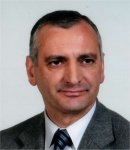|
||||||||||||||
|
Plenary
Lecture
Abstract: Nonlinear effects in optical fibers impose
different limitations on the communications link, and an
understanding of such effects is almost a prerequisite
for actual lightwave-system designers. On the other
hand, they offer a variety of possibilities for
all-optical signal processing, amplification and
regeneration. Using conventional optical fibers for
these applications, a length of several kilometres is
usually required due to their relatively small nonlinear
parameter ( ). Such long fibers pose some practical
limitations, concerned namely with the size and
stability of the system. The required fiber length is
reduced to about 1km using highly nonlinear silica
fibers with a smaller effective mode area, and hence, a
larger nonlinear parameter ( ). A further reduction in
fiber length by one order of magnitude has been achieved
in recent years using nanowires and microstructured
optical fibers with an extremely small effective mode
area and significantly enhanced nonlinear
characteristics. Another main advance was the production
of highly nonlinear fibers using materials with a
nonlinear refractive index higher than that of the
silica glass, namely lead silicate, tellurite, bismuth
glasses and chalcogenide glasses. Using such fibers, the
required fiber length for nonlinear processing can be
dramatically reduced to the order of centimetres.
|
|
|||||||||||||
|
|
|
|
||||||||||||
| copyright - designed by WSEAS | ||||||||||||||
